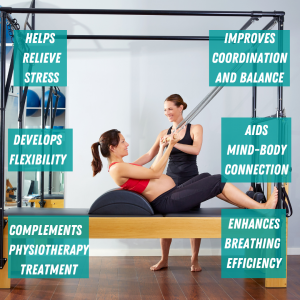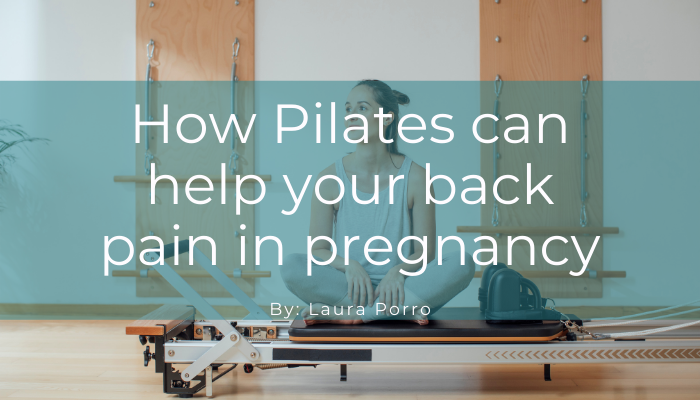Specialist Pilates for pregnancy
In our recent blog, we talked about back pain during pregnancy. Let’s take a look at how a specialist Pilates programme can support the health and good functioning of the pelvic floor in women and men, thus mitigating the risk of developing back pain and reducing it when it occurs.
What is Pilates?
Pilates is a system of training for the body and mind, based on principles created by Joseph Pilates.
By fostering a deep connection between body and mind this incredibly graceful exercise, creates a unique awareness and focus. Pilates practice leads to an intense and deeply satisfying workout, which leaves you feeling stronger, more flexible and at ease in your body.
During a Pilates session at Vitality, you use a range of small props (such as bands, balls, and weights) and equipment, including the Reformer.
Pilates is the optimal complement to other physical rehabilitation and training programmes, such as physiotherapy, because:
It helps re-integrate the injured joint with the rest of the body.
It restores and re-trains optimal movement patterns, to prevent the recurrence of issues.
It addresses the postural factors that contribute to injury and pain.

The powerful changes that Pilates can bring
How does Pilates help pelvic floor issues?
Pilates exercises can mitigate and improve the following conditions caused by pelvic floor issues:
Back pain.
Urinary incontinence.
Anal and vaginal air.
Recovery from vaginal birth and episiotomies.
Prolapse.
Pelvic floor muscle disorder and pain.
A Pilates-based pelvic floor reconditioning programme focuses on:
Training the deep core muscles of the inner unit (transversus abdominis, multifidi, diaphragm). This means conditioning these muscles and learning how to coordinate them.
Developing efficient breathing mechanics. Optimal intra-abdominal pressure is needed to ensure the correct functioning of the pelvic floor muscles.
What does this look like in practice?
During a Pilates session at Vitality, our specialist will take you through a series of exercises to condition:
The abdominal muscles (lower abdominal fibers and transversus abdominis). For instance, you will perform exercises in a supine position where the spine is neutral and the hips move, e.g. lifting your legs up.
The back extensors. For instance, exercises in a prone or standing position where the spine is extended or stabilised against gravity, e.g. moving your limbs when in four-point kneeling.
The diaphragm. For instance, breathing exercises to practice coordinating the different muscles in the inner unit, and to practice moving in sync with different breathing patterns, e.g. the classic Pilates exercise ‘Hundred’.
How do I know if I need this?
If you are experiencing lower back pain or any other of the symptoms listed above, book your assessment with us. Our experts will determine the root cause of your issue and develop a personalised programme tailored to your needs and goals.

